#medical radioisotopes
Explore tagged Tumblr posts
Text
Real-World Medical Applications of At-211 in Cancer Treatment
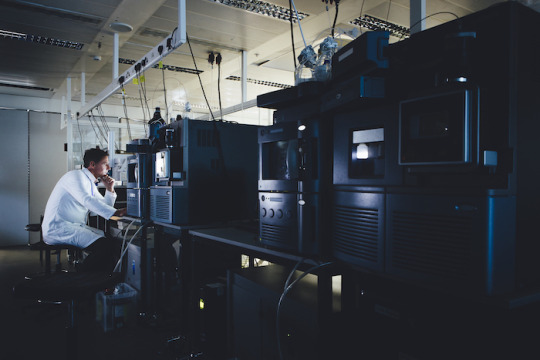
Scientifically speaking, radioisotopes are atoms with unstable nuclei that release energy through radiation. Although people think radioisotopes are just used in nuclear applications, they are also used in targeted therapies and innovative imaging techniques in the medical landscape. They are applied in both diagnostic and therapeutic procedures and are a non-invasive way to detect, monitor, and treat different health conditions. The ability of medical radioisotopes to target specific areas in the body makes them quite useful in cardiology, oncology, and even neurology.
Among all the radioisotopes, At-211 has made a name for itself in cancer treatment, and we are going to find out why!
Astatine-211 (At-211) in Cancer Treatment
Known for emitting powerful alpha particles with high cell-killing potential, the At-211 is being studied for its unique ability to selectively destroy cancer cells while sparing the surrounding healthy tissue. Alpha particles are highly charged, which means they deposit substantial energy over a very short distance (a few cell diameters), which makes At-211 ideal for targeting individual cancer cells or small clusters without affecting nearby normal cells. There are several reasons why healthcare professionals try to work with an At-211 supplier for cancer therapy. These include:
High Linear Energy Transfer (LET): The alpha particles emitted by At-211 have a high LET, which means they can deliver concentrated doses of radiation directly to the targeted cancer cells. This leads the double-stranded DNA to break, and the cells cannot easily repair, causing the oncogenic cell death efficiently. Hence, cancer cells that are resistant to conventional therapies can also be eliminated through this method.
Short Path Length: The radiation emitted by At-211 travels only a short distance in tissues, which is typically less than 1000 micrometers. This characteristic makes the At-211 suitable for targeting small, localized cancerous areas, such as micro-metastates or isolated tumor cells, without damaging the nearby healthy cells.
Minimal Side Effects: Due to the short range of alpha particles, the At-211 has fewer side effects as compared to other radioisotopes that emit beta or gamma radiation, which can travel farther and damage healthy tissues. This makes the At-211 a promising alternative for cases where preserving surrounding healthy tissue is crucial, such as in brain or eye tumors.
Applications of At-211 in Cancer Therapy
At-211 has shown tremendous potential in treating different types of cancer, especially those that are difficult to treat with traditional methods. These include:
Brain Tumors: For highly localized cancers, like glioblastomas or other aggressive brain cancers, At-211 offers targeted destruction of cancer cells with minimal impact on surrounding brain tissue.
Blood Cancers: At-211 has been studied for use in leukemia and lymphoma, where it can be attached to antibodies targeting cancer cells, allowing the radioisotope to selectively bind to and destroy malignant cells in the bloodstream.
Metastatic Cancers: At-211 can target small clusters of cancer cells that have spread from a primary tumor to other areas in the body, making it valuable in controlling metastatic disease.
Conclusion
Although the medical application of radioisotopes is widely proven, they aren’t widely available due to supply chain disruptions and other shortcomings. The production of radioisotopes is cost and time-intensive as well. This is why Nusano has set its foot forward to revolutionize radioisotope production and overcome technical limitations, waste stream concerns, and supply outages. By stabilizing radioisotope supply chains and making a wide variety of isotopes available to drugmakers, researchers, and clinicians the firm is truly setting standards.
Source: https://nusanous.blogspot.com/2024/11/real-world-medical-applications-of-at.html
0 notes
Text
Saudi Arabia and Middle East Radioisotope Market is Poised for High Growth Owing to Growing Medical Applications

Radioisotopes find numerous applications in the field of medicine for purposes such as diagnosis and treatment of certain medical conditions. Technetium-99m and iodine-131 are among the most widely used medical radioisotopes globally. The growing prevalence of chronic diseases such as cancer is propelling the demand for nuclear medicine diagnostics and therapies, which in turn is driving the radioisotope market in the region.
The Saudi Arabia and Middle East radioisotope market is currently valued at US$ 691.3 million in 2024 and is expected to exhibit a CAGR of 1.1% over the forecast period of 2024-2031. Key Takeaways Key players: Key players operating in the Saudi Arabia And Middle East Radioisotope Market Growth are GE Healthcare, IBA, Sumitomo Corporation, BWX Technologies, Inc., Advanced Cyclotron Systems, Inc., Navidea Biopharmaceuticals, Inc., BEST Cyclotron Systems Inc., NorthStar Medical Radioisotopes, Siemens Healthineers, Novartis, Moravek Biomedicals Inc., Nordion, Research Products International Corp., Cardinal Health Nuclear Pharmacy, American Radiolabeled Chem. Inc., Perkin-Elmer (NEN), IRE, Eckert & Ziegler., Curium, ANSTO, HTA Co., Ltd, Isotope JSC., SAMIRA, OECD-NEA, Telix Pharmaceuticals Limited., The State Atomic Energy Corporation, ROSATOM, ISOTOPIA, NTP Radioisotopes, KFSH&RC, Jordan Research and Training Reactor, Esfahan Nuclear Technology Center, ETRR-2, and SRR-1.
Key players operating in the Saudi Arabia and Middle East radioisotope market include GE Healthcare, IBA, Sumitomo Corporation, BWX Technologies, Inc., among others. PEST Analysis Political: The radioisotope market in Saudi Arabia and Middle East region is greatly influenced by the political stability of the region. Political tensions and conflicts impact the supply chain and distribution channels of radioisotopes. Economic: The economic growth and development in the healthcare sector will drive the demand for radioisotopes used in diagnostic imaging and therapeutic procedures. Public healthcare spending influences the adoption of advanced medical technologies using radioisotopes. Social: A growing and ageing population coupled with increasing incidence of chronic diseases is enhancing the social need for accessible and affordable healthcare services. This is positively impacting the utilization of radioisotopes in medical diagnostics and treatment.
Get More Insights On This Topic: Saudi Arabia and Middle East Radioisotope Market
#Saudi Arabia#Middle East#Radioisotope Market#Nuclear Medicine#Healthcare#Radiopharmaceuticals#Isotopes#Medical Imaging
0 notes
Text
Diagnostic Radioisotopes Market: Growing demand for medical imaging procedures to drive market growth

The global Diagnostic Radioisotopes Market is estimated to be valued at US$ 5.67 billion in 2023 and is expected to exhibit a CAGR of 9% over the forecast period 2023-2030, as highlighted in a new report published by Coherent Market Insights. A) Market Overview: Diagnostic radioisotopes are radioactive substances that are used in medical imaging procedures such as PET and SPECT scans. These isotopes help in the diagnosis and monitoring of various diseases such as cancer, cardiovascular diseases, and neurological disorders. B) Market key trends: One key trend in the diagnostic radioisotopes market is the increasing use of technetium-99m (Tc-99m) in medical imaging. Tc-99m is the most widely used isotope for diagnostic purposes, due to its favorable imaging properties and cost-effectiveness. It has a short half-life, which allows for timely imaging procedures without prolonged radiation exposure. Tc-99m is used in various imaging techniques such as single-photon emission computed tomography (SPECT) and gamma camera imaging. The increasing adoption of Tc-99m in hospitals and diagnostic centers, along with advancements in imaging technology, is expected to drive the growth of the diagnostic radioisotopes market. Porter’s Analysis: Threat of new entrants: The threat of new entrants in the Diagnostic Radioisotopes market is relatively low. The market requires significant investments in research and development, as well as regulatory approvals for the production and distribution of radioisotopes. Moreover, established players in the market benefit from economies of scale, established distribution networks, and strong relationships with healthcare providers. These factors act as barriers to entry for new players. Bargaining power of buyers: The bargaining power of buyers in the Diagnostic Radioisotopes market is moderate. While buyers have the option to choose from a range of suppliers, they are highly dependent on these suppliers for the availability of radioisotopes. Threat of new substitutes: The threat of new substitutes in the Diagnostic Radioisotopes market is low. Radioisotopes are essential for various diagnostic imaging procedures, and currently, there are no viable alternatives that can match the accuracy and effectiveness of these isotopes. Competitive rivalry: The competitive rivalry in the Diagnostic Radioisotopes market is high. The market is dominated by a few major players such as GE Healthcare, Siemens Healthineers, and Philips Healthcare. These companies compete on factors such as product quality, distribution networks, and pricing strategies. The market is also witnessing increased consolidation activities, further intensifying the competition. Key Takeaways: The global Diagnostic Radioisotopes market is expected to witness high growth, exhibiting a CAGR of 9% over the forecast period of 2023-2030. This growth can be attributed to the increasing prevalence of chronic diseases such as cancer and cardiovascular disorders, which require accurate diagnostic imaging. In terms of regional analysis, North America is expected to be the fastest-growing and dominating region in the Diagnostic Radioisotopes market. This can be attributed to the presence of advanced healthcare infrastructure, a high prevalence of chronic diseases, and significant investments in research and development. Key players operating in the Diagnostic Radioisotopes market include GE Healthcare, Siemens Healthineers, Philips Healthcare, Cardinal Health, and Bracco Imaging, among others. These players have a strong market presence and offer a wide range of diagnostic imaging agents. Overall, the Diagnostic Radioisotopes market is projected to experience substantial growth in the coming years, driven by increasing demand for accurate diagnostic imaging and advancements in technology. This presents lucrative opportunities for key players to expand their market share and cater to the rising healthcare needs worldwide.
#Diagnostic Radioisotopes#Diagnostic Radioisotopes Market#Diagnostic Radioisotopes Market Growth#Global Diagnostic Radioisotopes Market#Diagnostic Radioisotopes Market Size#Medical Devices.
0 notes
Text
Accelerating New Drug Development: The Role of Radioisotope Labeling
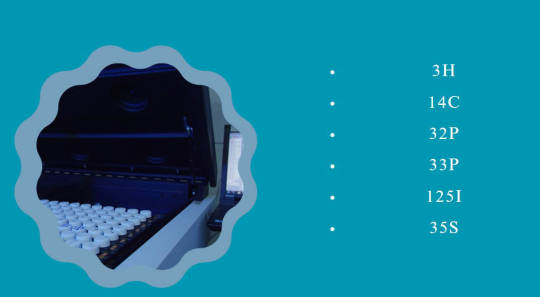
In drug development, Radioisotope labeling has become a powerful tool. It provides a means to track the fate of drugs in the body and helps researchers to better understand the metabolic processes and potential toxicity of new compounds. So, scientists can design more effective and safer drugs, reducing the risk of adverse effects and increasing the likelihood of success in clinical trials.
Isotopes are atoms of the same chemical element with different masses due to the presence of different neutron numbers in the nucleus, and there are light and heavy isotopes; based on physical properties, isotopes can also be classified into two forms: radioactive and stable. Radioisotope labeling technology is a very useful tool in the process of new drug development, and Medicilon offers radioisotope services.
Based on physical properties, isotopes can be classified into two forms: radioactive and stable. Radioactive isotopes (e.g. 3H, 14C) undergo their decay process and radiate radiation energy, are unstable, and have physical half-life; stable isotopes are non-radioactive, have stable physical properties, exist in nature in a certain proportion (abundance), are harmless to the human body, and can be labeled into drug molecules by chemical synthesis and tracked and detected by instruments such as gas and liquid quality.
1, The reason why radioisotopes are widely used.
Radioisotopes are widely used for active material tracing mainly depending on two most important characteristics:
(1) homogeneity with the material being traced, i.e., a high degree of consistency in chemical and biological behavior between the radionuclide and its non-radionuclides of the same element, without disturbing and disrupting the equilibrium of physiological processes in vivo and in vitro;
(2) Distinguishability with the traced material, where the nucleus of the radionuclide continuously decays and emits rays that can be detected by the radiosonde, thus enabling the quantification and localization of the marker.
In addition, radioisotope tracer technology has the advantages of high sensitivity, high specificity, wide applicability, and simple detection method, so it has been widely used in drug ADME research, and the U.S. FDA has long taken the pharmacokinetic data of radioisotope labeled drugs after administration as an important basis for the safety evaluation of new drugs, and has formulated relevant guidelines.
2, The direction of radioisotopes in drug development
In terms of quantitative sensitivity, radioisotope-labeled compounds are more sensitive than stable isotope markers, and the measurement of radioactivity is not affected by non-radioactive impurities and chemical states, thus making quantitative analysis easier and the results more accurate. In addition to solving analytical problems that cannot be solved by conventional analytical methods, radioisotope-labeled compounds can more importantly be used as tracers to study the distribution, metabolism, efficacy, and mechanism of action of drugs in vivo, providing an important basis for the pharmacokinetic study of drugs, and providing methods for the development of innovative drugs.
3, Choice of radioisotope labeling position
Before the preparation of labeled drugs, the first step is to select the appropriate isotope as the labeling element and decide on the labeling position. The labeled drug used for tracer study should make the labeled atoms represent the whole molecule of the drug in the organism as much as possible and should pay attention to the possible changes of the drug in the body. The structure of the drug molecule, the half-life of the isotope, the energy of the radiation, the ease of introducing the labeled atom, and the special requirements of the tracer test should be taken into account when choosing the isotope to be used as the labeled atom. The most commonly used isotopes are 14C, 3H, and 35S; sometimes 32P and 131I are also used.
As the most commonly used radionuclide, 14C is usually labeled on the skeleton structure of molecules, and its labeling sites are more stable; 3H is prone to exchange with 1H in the surrounding environment, resulting in a decrease in a specific activity, so it is less stable than 14C; in addition, 3H has a more obvious isotope effect compared with 14C, which also limits its application to some extent. However, in general, in tracer experiments, the errors caused by isotopic effects are often within the experimental allowable errors and can be neglected. In addition, considering that the synthesis of 3H markers is relatively simple, 3H markers are also often chosen as tracers when they can meet the experimental requirements.
In addition to the above, computer-assisted metabolite prediction (CAMP) techniques can be used in the selection of labeling sites to predict stable sites in the molecular structure of compounds. In general, labeling of C atoms on aromatic or alicyclic rings in the molecular structure should be considered first, while labeling at active sites such as carboxyl, hydroxyl, sulfhydryl, amino, and imino groups should be avoided as much as possible. This is because once these unstable groups are separated from the parent compound, the ability to trace the parent drug and major metabolites is lost. In addition, the labeling site should be far away from the chemical bond-break location to avoid the effect of isotope effect. If the parent compound generates 2 important metabolites simultaneously due to chemical bond breakage during metabolism, a dual-labeling technique can be considered for parent compound labeling.
Medicilon offers radioisotope analysis services for labeling experiments in the drug development process using radioisotopes such as 3H, 14C, 32P, 33P, 125I, and 35S.
0 notes
Text


The Open-Pool Australian Lightwater Reactor (OPAL) Australian Nuclear Science and Technology Organisation, Lucas Heights, Sydney, Australia The reactor is only used to produce medical radioisotopes. image credits: ANSTO
74 notes
·
View notes
Note
Treat- Gashiar "Protective Garak"
It took me quite a while to remember if I'd ever written something matching that description hehe XD (I really don't write that much Garashir, and what I do write is canon-typical-subtext with more than a dash of Garak's-a-dick-even-when-he's-trying lmao.)
But actually, yeah - a whole chapter of Vision Awry was Garak being protective over Julian - even if Julian was very much resenting it! - and that definitely was something I was very proud of. So, my apologies if you've already read it, but here's an extract from that!
<Link to ask game here!>
--
“I trust your experiment was successful?”
Bashir scowled at him. “You really can’t let anything go, can you?” he said, frustration evident in his voice.
“I am certain you've made that observation before,” replied Garak, raising his eyebrows at the doctor.
Bashir pinched the bridge of his nose, sighing deeply, before locking eyes with Garak. “Fine,” he said, “I’ll tell you. But I’m trusting you, Garak - you can’t tell Girani, or anyone else. Somehow, they don’t understand how important this is. But you’ll understand, won’t you?”
Garak could almost taste the doctor’s desperation. “I’m sure your explanation will be enlightening,” he said carefully; not a lie, but not a promise, either.
Apparently it was enough for Bashir. He sat up straighter in his chair, still holding Garak’s gaze with a determined intensity - as though eye contact was a task that required great focus.
“I think you know that this is the third time I’ve re-lived this day, and that in each of the three previous versions, Chief O’Brien died.” He paused for confirmation; Garak nodded. “Well, the first time it happened by accident - but on the second and third days I was able to synthesise a serum that allowed the time-travelling effect to take place once again. We still haven’t worked out exactly what’s happening, but to put it simply, it seems that absorbing delta series radioisotopes into my bloodstream allows me to experience a temporal shift while I sleep.”
“And that’s what you were formulating on my counter,” said Garak, mind racing to work out why Girani was supposedly so opposed to it. “Excuse my ignorance, Doctor, but that does sound rather dangerous - almost as if you’re giving yourself radiation poisoning.”
Bashir shrugged. “In effect, I am, yes,” he said, “but only very mildly, and it seems to disappear when the day resets. Trust me - I’ve given myself a very thorough medical workout, and there are no physical side-effects. It’s perfectly safe.”
“I’m glad to hear it,” Garak replied. “I assume any mental side-effects are equally well-accounted for?”
“Girani’s wrong about me being suicidal, if that’s what you’re asking,” Bashir said bluntly.
Garak pretended to take a sip of his now-too-cold tea, watching the doctor carefully over the rim of the mug. Bashir continued to meet Garak’s eyes coolly, daring the tailor to argue back.
“I bow to your expertise, Doctor.”
Bashir’s eyes widened slightly before his lips settled into a smile, pleased at Garak’s response, just as Garak had known he would be. With his next question already on his tongue, Garak leant forward.
“If I may ask, what precautions are you taking so that you don’t become so in the future?”
Immediately, the doctor opened his mouth, but then closed it, sitting back and appearing to properly consider the question. This was satisfying; Garak had hoped that Bashir would find it difficult to just brush his words away. Although he did believe that Bashir genuinely did not think he was a danger to himself, he could not yet be certain that the doctor’s self-assessment was more accurate than Girani’s.
“I’m not going to just… give up,” said Bashir slowly, eyes flickering from side to side as he collected his thoughts. “That’s the crux of the matter, isn’t it? If I can’t save Miles, then I’m going to keep going until I do save him, no matter how I feel. And if he doesn’t die, then it’s all over anyway, and everything will be fine, again.”
“And how are you feeling, Doctor?”
“What?” Bashir looked confused, as though he actually couldn’t imagine why Garak would have asked him that.
“You said that you’re going to keep going, no matter how you feel. How are you feeling today, my dear?”
It wasn’t sentiment asking the question, Garak assured himself. It was a natural continuation of the trap that Bashir was talking himself into, and the doctor would never answer if he didn’t believe that Garak cared.
“You asked me something similar in the infirmary, too. Since when did we discuss our feelings?” the young man asked playfully, trying to cover up his vulnerability with a gentle laugh.
“My dear doctor, your feelings are always on display to me . Every discussion we have is positively awash with your emotions. You do not try to hide them.”
That was not entirely true - Julian simply wasn’t good at hiding how he felt. There had been many times over the years where the doctor had suddenly grown quieter, more reserved, some sort of shame stealing the passion or hurt from his voice; but it was not usually so difficult to discern what Bashir’s true feelings were.
“Earlier, you said I was a puzzle,” Bashir said.
“Earlier, you were.”
“Then why are you asking, Garak?” the doctor replied with a soft, weary sigh. “If you’ve managed to figure me out, why not just tell me how I’m feeling?”
Sitting back, Garak clasped his hands together in front of him, considering if he should take up that invitation, and how far he could go before Bashir decided he’d had enough.
“Well, if that’s what you’d like…” he said.
Bashir scoffed. “Everyone else seems to be, so I guess I might as well hear you, too.”
Garaks’ lips curled up into a wide smile. “You’re angry, doctor, and frustrated. You resent being put on this fifty-two-hour watch - and actually, I do believe you’re embarrassed by it, too. You’re scared it might interfere with your ability to save Chief O’Brien, and you’re distressed by the memories of watching him die. And you’re trying to ignore the possibility that it might be impossible to ever save him--”
“That’s not true!” Bashir interrupted.
“Isn’t it, Doctor?” asked Garak blandly. “You’ve accepted that all this time travel might be…futile?”
“Of course I haven’t!” he exclaimed. “You wouldn’t either, if it was someone that you lo-- that you cared about. There’s got to be a way that Miles can survive today - and however long it takes me, I’m going to find it, you can count on that.”
“Hmm,” Garak said. “I am afraid to say that I remain unconvinced. I cannot claim to know how the universe works, but if Chief O’Brien is supposed to die today, then I suppose the day will end with Chief O’Brien dying. You cannot cheat fate, Doctor, no matter how hard you try.”
“I won’t accept that, Garak,” Bashir shot back. “You can’t know that you’re right.”
“And nor, my dear Doctor, can you,” said Garak, increasing the harshness of his voice. “How many days will it take you to stop chasing this pointless quest? Twenty? Fifty? One hundred?”
“I don’t know!” Bashir stood up sharply. “But you can jolly well bet that it won’t be today.”
“Your loyalty is commendable,” said Garak, also rising out of his chair. “But it should not be your priority. Your optimism cannot last forever, Doctor: what happens when it runs out? When will you push yourself beyond your limits, and will anyone be able to catch you when you do?”
Bashir crossed his arms. “You’d do anything for Cardassia,” he retorted, “whether or not it was good for you, loyalty to the state comes before anything else, doesn’t it? Well in the Federation, we’re loyal to our friends - they come first. I suppose I shouldn’t have expected you to understand that.”
Sometimes, Garak felt as though he was merely a spectator in his own body, hearing his voice speak words that he hadn’t yet thought of. His need to win this argument, prove himself right overcame everything else, and muscle memory took over, caution giving way to borderline cruelty.
“They’re hardly the same, Doctor, but I would not expect you to understand that, either. You have clearly failed to grasp the most basic concept in Cardassian literature.”
“And what is that supposed to mean?”
“I speak of the repetitive epic, Doctor. There is nothing that ever really changes. Oh, small details might, you may be able to buy some extra minutes, even hours for our Chief of Operations. But in the end, you will fail, just as you’ve failed before, and you will be far better off if you accept that now. Chief O’Brien is doomed, and you will be too if you continue down this foolhardy path.”
“This isn’t a Cardassian novel, Garak, this is my life!” Bashir snarled, stepping angrily towards the tailor. “How could I live with myself if I didn’t try? If I give up on Miles, I might as well give up on myself!”
Bashir was breathing heavily; for a few seconds, Garak watched the rough rise and fall of his chest as the doctor started to recompose himself. The momentary distraction was enough for Garak to swallow his retort, and before he could say something that he would really regret, he walked over to the replicator.
“More tea?” he asked, causing a huff of breathless laughter from the other man.
“Is that all you’ve got to say?” Bashir replied incredulously. “More tea? ”
“I think we’ve both made our positions clear,” Garak said. “And now, I am going to make some more tea. Would you like some?”
#5+1 visionary fic#andi writes#thanks for the ask!! this was actually super fun to find hehe#even if a bit of a challnege#i was genuinely sitting here browsing through all my fics being like ??? can i answer this XD#(i love garashir in theory)#(but i don't read or write it that much - at least romantically)#(i ship julian with everyone - which does /include/ garak)#(but i guess i'm far more of a jiles or siskoshir or polycule gal at heart <3 <3)#but anyway no yes having said that I also can't /believe/ i forgot about this part in vision awry 😅😅#the most major plot point of day 4 what?? welp#(i could have chosen a part where Garak's MORE actively protective but 1. spoilers and 2. it wouldn't /really/ make sense out of context)#(i'm hoping this does :P )#thanks again!!! <3 <3 <3
4 notes
·
View notes
Text



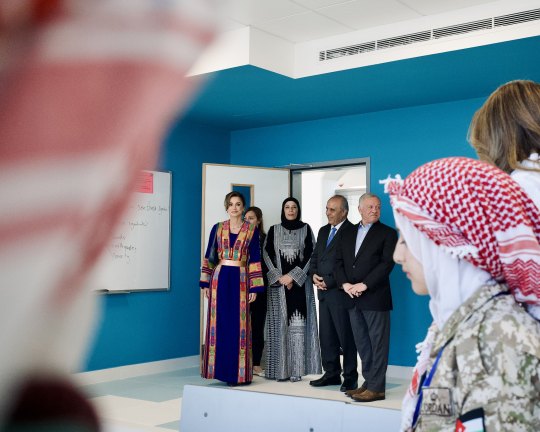






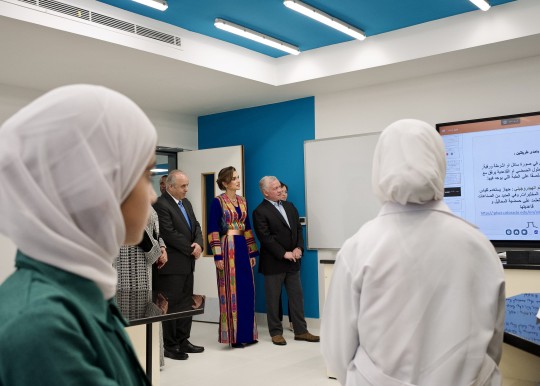
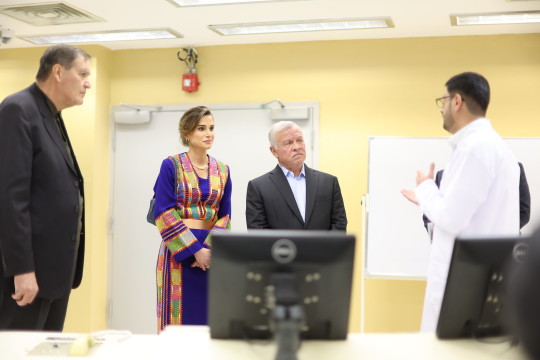










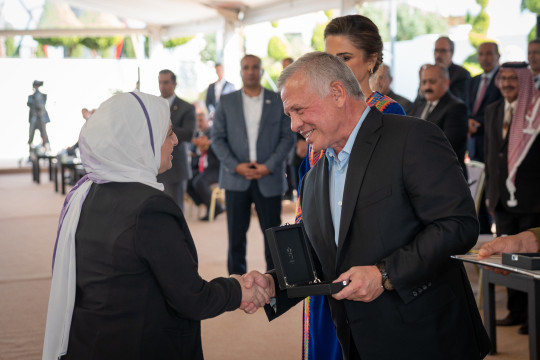




5 March 2024: King Abdullah II praised the development Irbid has witnessed over the past years, as evidenced by major water, energy and infrastructure projects, as well as the enhancement of education and health services.
Speaking at a meeting with local community leaders and figures in the governorate held at the King Abdullah II Park, His Majesty said Irbid has witnessed a remarkable expansion, and its population has significantly increased.
At the meeting, attended by Queen Rania, the King said that witnessing Jordanians’ achievements and meeting with them makes him more optimistic.
His Majesty said Jordan’s strength lies in in its sons and daughters who have had the spirit of achievement and faith in their potential instilled within them, stressing the importance of moving forward with this spirit.
For his part, Irbid Governor Radwan Otoum said the governorate has witnessed over the past 25 years quantum leaps in development that covered economy, education, healthcare, and tourism, adding that the country is witnessing comprehensive modernisation across the political, economic, and administrative tracks.
Also during his visit to Irbid, His Majesty inaugurated Ibder Comprehensive Secondary School in Bani Kinanah district, a Royal Initiatives project built on an area of 7,000 square metres with a capacity of up to 1,000 students.
The King also visited the Jordan Research and Training Reactor, which functions as an educational and training platform that also supports medical and industrial fields.
His Majesty was briefed on the capabilities of the reactor, which is operated by Jordanians and abides by all nuclear safety measures, as it provides all the Kingdom’s hospitals with basic radioisotopes used for cancer diagnosis and treatment, as well as supporting the fields of medicine, biology, chemistry, forensic analysis, mining, agriculture, industry, and scientific research.
Upon arrival at the King Abdullah II Park prior to the meeting, the King, accompanied by the Queen, was received by Ramtha Youth Folk Dance Group and the Mghaier Rahoub Band to Revive Jordanian Culture.
During the meeting, His Majesty bestowed the Silver Jubilee Medal on individuals and institutions in Irbid, in recognition of their contributions to serving Jordan, especially the local community in the governorate.
Prime Minister Bisher Khasawneh, Royal Hashemite Court Chief Yousef Issawi, Director of the Office of His Majesty Jafar Hassan, and Adviser to His Majesty for Tribal Affairs Kneiaan Bluwi attended the meeting.
6 notes
·
View notes
Text
rocking back and forth please god let me get the funding to work with the awesome research group at grad school 1 in a good location OR let me get to work with the medical radioisotope guy at grad school 2 in a bad location but please for the love of god do not make me choose between taking a gap year and moving to grad school 2 bad location and then having to work in def3nse please please please please
#i really dont want to take a gap year#literally the only benefit would be more time with roommatelabpartnergirlfriend and my friends#but i would hate to be stagnant in my career and i wouldnt get a summer break and i would have to reapply to schools again#but if the other two options fall through i would have to do some stuff my morals would not be a fan of in order to do grad school this yea
5 notes
·
View notes
Text
Not long ago, Beloit, Wisconsin, was a largely rural community, mostly known for being the first stop in Wisconsin for travelers coming over the border from Illinois. Today, they’re trying to cure cancer here.
Northstar Medical Radioisotopes, a biotech startup building a rapidly growing campus of buildings just off the interstate, is developing cancer diagnostics and treatments that use radioactive materials. CEO Frank Scholz says it is the most exciting technology out there.
“This is an emerging field, very promising, to make a real difference in patients’ lives and the lives of their families, because we all are affected by cancer,” he said.
Northstar has been doing this work for 20 years, with occasional setbacks. Last year, the company blamed government-subsidized foreign competition for the layoffs of 93 employees — more than a quarter of its workforce — at its facilities in Beloit and Madison.But now, Scholz believes the company is on the verge of really taking off. It is not just because of the technology, which is generating interest from all around the world. It is also because Wisconsin is now home to of one of 31 Regional Technology and Innovation Hubs— or “Tech Hubs” for short — designated under the federal CHIPS and Science Act. Wisconsin’s hub focuses on bio-health.
On Tuesday, the Commerce Department announced it was awarding the Wisconsin hub $49 million in funding, part of a $500 million pool of money Congress authorized to get the Tech Hubs off the ground. More important than the money, Wisconsin officials say, is the fact that the designation formalizes a consortium of companies, including GE Healthcare Technologies — which has a major presence in the Milwaukee suburbs — and institutions like the University of Wisconsin-Madison supporting each other and smaller companies like Northstar.
“It will make us even more impactful for patients be able to move faster, and to scale up,” Scholz said. “It’s all about scaling up to be able to treat more patients earlier, faster.”
2 notes
·
View notes
Text
Technitium-99m is a nearly ideal radioisotope for many kinds of medical imaging and fortunately it is relatively easily produced from Molybdenum-99! unfortunately this process is known as milking.
#i speak#also unfortunately the canadian government sucks and shut down one of the major worldwide production sites of Mo-99#and now everyone is going um. okay this sucks
3 notes
·
View notes
Text
Nusano Overcoming Challenges in Medical Radioisotope Supply Chain
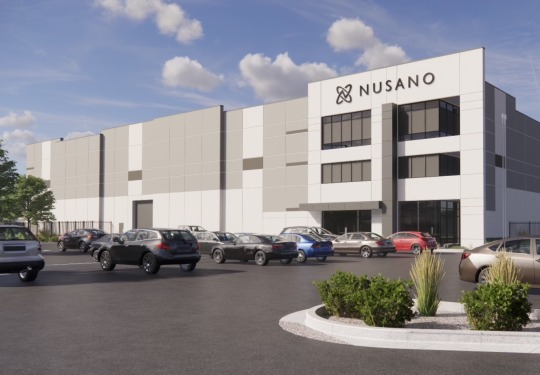
According to statistics, over 10,000 hospitals worldwide use medical radioisotopes, and about 90% of the procedures are for diagnosis. The medical industry relies immensely on radioisotopes for diagnostic imaging and therapeutic treatments, which is why a stable supply chain and seamless radioisotope production and distribution are crucial for patient care. However, the process isn’t as easy as it sounds. The supply chain of these medical radioisotopes faces massive challenges, and in this blog, we are going to uncover the key issues in the radioisotope supply chain and discuss strategies to overcome them.
Key Challenges
There are many challenges in the radioisotope supply chain. These are included as follows:
· Complex Radioisotope Production Process
The production process of radioisotopes, such as Lu-177, and actinium-225 production is quite daunting. It involves processes requiring specialized facilities and highly regulated environments, Radioisotopes are often produced in nuclear reactors or particle accelerators, and their production demands precise control of nuclear reactions.
The radioisotope production process is challenging because variations in the production process can lead to inconsistencies in the quality and purity of the radioisotopes, which can directly affect their effectiveness in medical applications.
· Short Half-Life of Medical Radioisotopes
Medical radioisotopes like Lu-177 and Actinum-225 have short half-lives, so they decay quickly and lose their effectiveness over time. Lu-177 supplier are quite rare because this factor makes their timely production, transportation, and use critical.
Any delays in the radioisotope supply chain can result in massive losses, as the radioisotopes may no longer be viable by the time they reach healthcare facilities. To ensure medical radioisotopes reach the market, producers, suppliers, and medical centers must have effortless coordination between them.
· Limited Production Facilities and Geographic Distribution
Globally, the production of radioisotopes is limited to a few specialized facilities, which are often concentrated in certain regions. This limited geographic distribution can lead to supply bottlenecks, especially when one or more production centers undergo maintenance or experience technical issues. In such cases, the entire radioisotope supply chain can be disrupted, which impacts the availability of critical medical radioisotopes for patients in need.
· Regulatory and Safety Concerns and High Costs
Regulatory and compliance approvals for handling, transporting, and storing these materials can slow down the supply chain, and add complexity to the already challenging logistics. In addition, setting up, and maintaining production facilities for medical radioisotopes, like those for Lu-177 and Actinium-225, is a costly endeavor.
The technology, infrastructure, and regulatory compliance needed to produce these isotopes require significant financial investments. Smaller companies or suppliers often struggle to compete due to these high barriers to entry, which limits the diversity of suppliers in the market and puts pressure on existing producers to meet growing demand.
Nusano’s Role in Revolutionizing the Radioisotope Supply Chain
Supplying the fight against cancer, Nusano is transforming the ecosystem of medical radioisotope production. With its new-age technology, the firm is addressing the challenges of radioisotope supply chain inefficiencies, and ensuring a steady and reliable flow of isotopes like Lu-177 and Actinium-225. By stabilizing the supply and making these vital resources more accessible, Nusano is providing patients worldwide with a potentially lifesaving asset in their fight against cancer.
Source: https://nusanous.blogspot.com/2024/10/nusano-overcoming-challenges-in-medical.html
0 notes
Text

From Nuclear Industry magazine (published by the Atomic Industrial Forum), November 1967.
Say it louder for those in the back.
Public understanding is a significant and understated problem area.
And we’re not talking about the general public here, the man in the street, who can be forgive a certain naivete. This is from people with scientific backgrounds.
Life-saving shipments of nuclear medicines, radioisotopes vitally needed for diagnosis and treatment, are routinely prevented from moving by bigots. It’s well known that shipments of fresh and spent nuclear fuel are often affected by protestors, but the virtual blockading of radioisotopes produced for medical, scientific, and industrial use mostly passes unremarked. Once again we see that the antinuclear crowd prefers to cause real harm to real people, rather than give up their notions of what is and is not proper.
3 notes
·
View notes
Text
Radiopharmaceuticals Market To Be Driven By The Growing Awareness
Analysis of Radiopharmaceuticals Market Size by Research Nester Reveals the Market to Register a CAGR of ~10.2% During 2025-2037 and Reach ~USD 26.6 billion by 2037
Research Nester assesses the growth and size of the global radiopharmaceuticals market which is anticipated to account for the increasing prevalence of chronic illnesses, the need for more sophisticated tests and treatments, and the development of diagnostic imaging technology.
Research Nester’s recent market research analysis on “Radiopharmaceuticals Market: Global Demand Analysis & Opportunity Outlook 2037” delivers a detailed competitor’s analysis and overview of the global radiopharmaceuticalsmarket in terms of market segmentation by type, radioisotopes, application, end use and by region.
Rising Need for Neurological Applications to Enhance Global Market Growth
Neurological applications are rapidly gaining traction across the globe, reshaping the global radiopharmaceutical market. Factors such as the rising need for precise diagnosis and the increasing prevalence of neurodegenerative disorders including Parkinson's and Alzheimer's are boosting the sales of radiopharmaceuticals. Radiopharmaceuticals have become essential tools for researchers and neurologists alike, as they may provide light on the intricate workings of the brain and molecular illnesses.
some key factors and challenges associated with the radiopharmaceuticalsmarket include:
Growth Drivers:
Growing need for neurological applications
Growing utilization of personalized medicine
Challenges:
Since radiopharmaceuticals guarantee productivity and security in the biotechnology and pharmaceutical industries, they are vital to healthcare institutions. However, several obstacles can prevent the business from realizing its full potential since radiopharmaceuticals are costly to develop and implement and the market might not be expanding rapidly during the forecast period.
Access our detailed report at: https://www.researchnester.com/reports/radiopharmaceuticals-market/6519
By type, the global radiopharmaceuticalsmarket is segmented into therapeutic and diagnostics. The diagnostics segment is expected to garner the highest revenue by the end of 2037. Radioisotopes such as fluorine-18, technetium-99m, and iodine-131 are used in imaging tools including, SPECT and PET. These isotopes are combined with radiopharmaceuticals, administered to patients, and then observed using specialized imaging equipment. Moreover, it is projected that the benefits of radioactive imaging over traditional diagnostic imaging will support the category's expansion by 2032.
By region, the Europe radiopharmaceuticalsmarket is anticipated to generate significant revenue during the forecast period. Growing government funding for medical imaging developments, a focus on customized medicine, and rising healthcare technology investments are all factors contributing to the growth of the radiopharmaceutical market in Europe. In targeted therapeutics and diagnostic imaging, radiopharmaceuticals are essential for bettering patient outcomes and increasing the effectiveness of healthcare delivery.
Customized report@ https://www.researchnester.com/customized-reports-6519
This report also provides the existing competitive scenario of some of the key players of the global radiopharmaceuticalsmarket which includes company profiling of Bayer AG, Bracco, Cardinal Health Inc., Coquí Radiopharmaceuticals Corp, Curium Pharma, Eli Lilly and Company, General Electric Company, IRE EliT, Bristol Myers Squibb and others.
Request Report Sample@ https://www.researchnester.com/sample-request-6519
Research Nester is a leading service provider for strategic market research and consulting. We aim to provide unbiased, unparalleled market insights and industry analysis to help industries, conglomerates, and executives to take wise decisions for their future marketing strategy, expansion, investment, etc. We believe every business can expand to its new horizon, provided the right guidance at the right time is available through strategic minds. Our out-of-the-box thinking helps our clients to make wise decisions to avoid future uncertainties.
Contact for more Info:
AJ Daniel
Email: [email protected]
U.S. Phone: +1 646 586 9123
U.K. Phone: +44 203 608 5919
0 notes
Text
Alpha Emitter Market to Hit $1751.5 Million by 2032
The global Alpha Emitter Market was valued at USD 671.2 Million in 2024 and it is estimated to garner USD 1751.5 Million by 2032 with a registered CAGR of 11.25% during the forecast period 2024 to 2032.
Are you looking for the Alpha Emitter Market Research Report? You are at the right place. If you desire to find out more data about the report or want customization, Contact us. If you want any unique requirements, please allow us to customize and we will offer you the report as you want.
The global Alpha Emitter Market can be segmented on the basis of product type, Applications, distribution channel, market value, volume, and region [North America, Europe, Asia Pacific, Latin America, Middle East, and Africa]. The Alpha Emitter Industry 2024 report provides a comprehensive overview of critical elements of the industry including drivers, restraints, and management scenarios.
Download Sample PDF: @ https://www.vantagemarketresearch.com/alpha-emitter-market-2419/request-sample
Top Players
Actinium Pharmaceutical Inc., Alpha Tau Medical Ltd, Bayer AG, Bracco, Cardinal Health, Eckert & Ziegle, Fusion Pharmaceuticals, IBA Worldwide, NorthStar Medical Radioisotopes (NMR), Orano Group, Viewpoint Molecular Targeting, RadioMedix, Telix Pharmaceuticals Limited
Trending 2024: Alpha Emitter Market Report Highlights:
A comprehensive assessment of the parent Industry
Development of key aspects of the business
A study of industry-wide market segments
Evaluation of market value and volume in past, present, and future years
Evaluation of market share
Tactical approaches of market leaders
Innovative strategies that help companies to improve their position in the market
You Can Buy This Report From Here: https://www.vantagemarketresearch.com/buy-now/alpha-emitter-market-2419/0
Analysis Of The Top Companies, Product Types, and Applications In The Market Report:
This report provides sales, revenue growth rate, and verified information about the major players. Also includes a regional analysis and a labor cost analysis, tables, and figures. It also highlights characteristics such as technological growth. The product type segment is expected to continue to maintain its leading position in the future and capture a significant market share based on sales. This report provides analysis, discussion, forecast, and debate on key industry trends, market share estimates, Industry size, and other information. This report also discusses drivers, risks, and opportunities.
Global Alpha Emitter Market report contains detailed data and analysis on the Alpha Emitter Market drivers, restraints, and opportunities. Experts with market and industry knowledge as well as research experience from regional experts validate the report. The Alpha Emitter Market report provides forecast, historical and current revenue for each industry, region, and end-user segment.
Regions Included
-North America [United States, Canada, Mexico]
-South America [Brazil, Argentina, Columbia, Chile, Peru]
-Europe [Germany, UK, France, Italy, Russia, Spain, Netherlands, Turkey, Switzerland]
-Middle East & Africa [GCC, North Africa, South Africa]
-Asia-Pacific [China, Southeast Asia, India, Japan, Korea, Western Asia]
Global Alpha Emitter Market report data will help you make more informed decisions. For example, in relation to prices, distribution channels are means of marketing or identifying opportunities to introduce a new product or service. These results will also help you make more informed decisions about your existing operations and activities.
Read Full Research Report with [TOC] @ https://www.vantagemarketresearch.com/industry-report/alpha-emitter-market-2419
You Can Use The Alpha Emitter Market Report To Answer The Following Questions:
What are the growth prospects of the Alpha Emitter Market business?
Who are the key manufacturers in the Alpha Emitter Market space?
What Forecast Period for Global Alpha Emitter Industry Report?
What are the main segments of the global Alpha Emitter Market?
What are the key metrics like opportunities and market drivers?
The Alpha Emitter Market Insights
Product Development/Innovation: Detailed Information On Upcoming Technologies, R&D Activities, And Product Launches In The Market.
Competitive Assessment: In-Depth Assessment Of Market Strategies, Geographic And Business Segments Of Key Market Players.
Market Development: Comprehensive Information On Emerging Markets. This Report Analyzes The Market For Different Segments In Different Regions.
Market Diversification: Comprehensive Information On New Products, Untapped Regions, Latest Developments, And Investments In The Alpha Emitter Market.
Check Out More Reports
Global Green Chemicals Market: Report Forecast by 2032
Global Surgical Sutures Market: Report Forecast by 2032
Global Smart Workplace Market: Report Forecast by 2032
Global Wireless Access Control Market: Report Forecast by 2032
Global Geospatial Analytics Market: Report Forecast by 2032
#Alpha Emitter Market#Alpha Emitter Market 2024#Global Alpha Emitter Market#Alpha Emitter Market outlook#Alpha Emitter Market Trend#Alpha Emitter Market Size & Share#Alpha Emitter Market Forecast#Alpha Emitter Market Demand#Alpha Emitter Market sales & price
0 notes
Text
Global Nuclear Medicine Radioisotopes Market Analysis 2024: Size Forecast and Growth Prospects
The nuclear medicine radioisotopes global market report 2024 from The Business Research Company provides comprehensive market statistics, including global market size, regional shares, competitor market share, detailed segments, trends, and opportunities. This report offers an in-depth analysis of current and future industry scenarios, delivering a complete perspective for thriving in the industrial automation software market.
Nuclear Medicine Radioisotopes Market, 2024 report by The Business Research Company offers comprehensive insights into the current state of the market and highlights future growth opportunities.
Market Size - The nuclear medicine radioisotopes market size has grown strongly in recent years. It will grow from $7.57 billion in 2023 to $8.21 billion in 2024 at a compound annual growth rate (CAGR) of 8.4%. The growth in the historic period can be attributed to discovery of radioactivity, emergence of nuclear medicine, therapeutic applications, clinical research, and patient demand.
The nuclear medicine radioisotopes market size is expected to see strong growth in the next few years. It will grow to $11.44 billion in 2028 at a compound annual growth rate (CAGR) of 8.7%. The growth in the forecast period can be attributed to increasing healthcare spending, expansion of healthcare infrastructure, growing awareness of environmental sustainability, education campaigns and awareness programs and growth in medical tourism. Major trends in the forecast period include development of new radioisotopes, production and supply chain innovations, microfluidics and lab-on-a-chip technology, artificial intelligence in radiopharmaceutical development and nanotechnology.
Order your report now for swift delivery @ https://www.thebusinessresearchcompany.com/report/nuclear-medicine-radioisotopes-global-market-report
Scope Of Nuclear Medicine Radioisotopes Market The Business Research Company's reports encompass a wide range of information, including:
1. Market Size (Historic and Forecast): Analysis of the market's historical performance and projections for future growth.
2. Drivers: Examination of the key factors propelling market growth.
3. Trends: Identification of emerging trends and patterns shaping the market landscape.
4. Key Segments: Breakdown of the market into its primary segments and their respective performance.
5. Focus Regions and Geographies: Insight into the most critical regions and geographical areas influencing the market.
6. Macro Economic Factors: Assessment of broader economic elements impacting the market.
Nuclear Medicine Radioisotopes Market Overview
Market Drivers - The rising cases of cardiovascular diseases are expected to propel the growth of the nuclear medicine radioisotope market going forward. Cardiovascular diseases refer to a group of diseases that affect the heart and blood vessels. The rising cases of cardiovascular diseases are due to sedentary lifestyles, poor dietary habits, increasing rates of obesity, and aging populations. The nuclear medicine radioisotopes are invaluable in diagnosing, evaluating, and managing cardiovascular diseases with detailed insights into cardiac function, perfusion, and tissue viability, which are essential for accurate diagnosis and effective treatment planning. For instance, in May 2022, according to the Centers for Disease Control and Prevention, a US-based governmental organization, the prevalence of coronary heart disease among adults aged 18 and over stood at 4.6% in 2020, experiencing a slight uptick to 4.9% in 2021. Therefore, the rising cases of cardiovascular diseases are driving the growth of the nuclear medicine radioisotope market.
Market Trends - Major companies operating in the nuclear medicine radioisotopes market are focusing on developing innovative products, such as the compact low-energy cyclotron, to improve the production and availability of radioisotopes, ensuring more efficient and accessible diagnostic and therapeutic options. A compact, low-energy cyclone is a small particle accelerator used to create radioisotopes for medical imaging and treatments in nuclear medicine. For instance, in January 2022, IBA, a Belgium-based provider of radiopharmaceutical production solutions, launched Cyclone Key, a new accelerator providing increased access to diagnostic solutions and enabling in-house production of radiopharmaceuticals. This innovative solution offers unique features such as a compact and efficient design, fully automated operation, multiple isotope production capabilities, ease of installation and operation, water cooling, self-shielding, and high performance, making it versatile and reliable.
The nuclear medicine radioisotopes market covered in this report is segmented –
1) By Type: Technetium-99m (Tc-99m), Thallium-201 (Tl-201), Iodine (I-123), Fluorine-18, Rubidium-82 (Rb-82), Iodine-131 (I-131), Lutetium-177 (Lu-177), Radium-223 (Ra-223) And Alpharadin, Actinium-225 (Ac-225), Other Types 2) By Application: Oncology, Cardiology, Thyroid, Neurology, Other Applications 3) By End-User: Hospitals, Diagnostic Centers, Specialty Clinics, Education And Research Institutes, Other End-Users
Get an inside scoop of the nuclear medicine radioisotopes market, Request now for Sample Report @ https://www.thebusinessresearchcompany.com/sample.aspx?id=16132&type=smp
Regional Insights - North America was the largest region in the nuclear medicine radioisotopes market in 2023. Asia-Pacific is expected to be the fastest-growing region in the forecast period. The regions covered in the nuclear medicine radioisotopes market report are Asia-Pacific, Western Europe, Eastern Europe, North America, South America, Middle East, Africa.
Key Companies - Major companies operating in the nuclear medicine radioisotopes market are Cardinal Health Inc., Bayer Aktiengesellschaft, Siemens Healthineers AG, GE HealthCare Technologies, BWX Technologies Inc., Mallinckrodt Pharmaceuticals, Bracco Imaging S.p.A., Lantheus Holdings Inc., Curium Pharma, Australian Nuclear Science and Technology Organisation (ANSTO) Health, Eckert & Ziegler Strahlen, NorthStar Medical Radioisotopes, NTP Radioisotopes, Shine Medical Technologies Inc., Jubilant DraxImage Inc., Isotopia Molecular Imaging Ltd., Eczacıbaşı-Monrol Nuclear Products, International Isotopes Inc., Polatom Sp. z o.o., Radiomedix Inc., Positron Corporation
Table of Contents 1. Executive Summary 2. Nuclear Medicine Radioisotopes Market Report Structure 3. Nuclear Medicine Radioisotopes Market Trends And Strategies 4. Nuclear Medicine Radioisotopes Market – Macro Economic Scenario 5. Nuclear Medicine Radioisotopes Market Size And Growth ….. 27. Nuclear Medicine Radioisotopes Market Competitor Landscape And Company Profiles 28. Key Mergers And Acquisitions 29. Future Outlook and Potential Analysis 30. Appendix
Contact Us: The Business Research Company Europe: +44 207 1930 708 Asia: +91 88972 63534 Americas: +1 315 623 0293 Email: [email protected]
Follow Us On: LinkedIn: https://in.linkedin.com/company/the-business-research-company Twitter: https://twitter.com/tbrc_info Facebook: https://www.facebook.com/TheBusinessResearchCompany YouTube: https://www.youtube.com/channel/UC24_fI0rV8cR5DxlCpgmyFQ Blog: https://blog.tbrc.info/ Healthcare Blog: https://healthcareresearchreports.com/ Global Market Model: https://www.thebusinessresearchcompany.com/global-market-model
0 notes
Text
Global Molybdenum 99 Market Overview : Size, Share, and Future Trends Forecast

Molybdenum 99 Market Strategies: Taking Advantage of Trends to Drive Growth in 2032
The Molybdenum 99 Market Report provides essential insights for business strategists, offering a comprehensive overview of industry trends and growth projections. It includes detailed historical and future data on costs, revenues, supply, and demand, where applicable. The report features an in-depth analysis of the value chain and distributor networks.
According to Straits Research, the global Molybdenum 99 Market market size was valued at USD 3.77 billion in 2023. It is projected to reach from USD 3.91 billion in 2024 to USD 5.34 billion by 2032, growing at a CAGR of 3.96% during the forecast period (2024–2032).
Get Free Request Sample Report @ https://straitsresearch.com/report/global-molybdenum-99-market/request-sample
TOP Key Industry Players of the Molybdenum 99 Market
Curium Company
Eckert & Ziegler Holding Company
Shine Medical Technologies
NTP Radioisotopes SOC Ltd.
North Star Medical Radioisotopes LLC
JSC Isotope
ANSTO
Lantheus Medical Imaging Inc.
IRE ELIT
Niowave Inc.
Global Molybdenum 99 Market: Segmentation
As a result of the Molybdenum 99 market segmentation, the market is divided into sub-segments based on product type, application, as well as regional and country-level forecasts.
By Product Type
Production by Non-Highly Enriched Uranium
Production by Highly Enriched Uranium
By Industry
Scientific Research
Medical
By Isotopic Application
Gamma Camera
SPECT
By End User
Research Institutes
Hospitals and Diagnostic Centers
Browse Full Report and TOC @ https://straitsresearch.com/report/global-molybdenum-99-market/request-sample
Reasons for Buying This Report:
Provides an analysis of the evolving competitive landscape of the Automatic Rising Arm Barriers market.
Offers analytical insights and strategic planning guidance to support informed business decisions.
Highlights key market dynamics, including drivers, restraints, emerging trends, developments, and opportunities.
Includes market estimates by region and profiles of various industry stakeholders.
Aids in understanding critical market segments.
Delivers extensive data on trends that could impact market growth.
Research Methodology:
Utilizes a robust methodology involving data triangulation with top-down and bottom-up approaches.
Validates market estimates through primary research with key stakeholders.
Estimates market size and forecasts for different segments at global, regional, and country levels using reliable published sources and stakeholder interviews.
About Straits Research
Straits Research is dedicated to providing businesses with the highest quality market research services. With a team of experienced researchers and analysts, we strive to deliver insightful and actionable data that helps our clients make informed decisions about their industry and market. Our customized approach allows us to tailor our research to each client's specific needs and goals, ensuring that they receive the most relevant and valuable insights.
Contact Us
Email: [email protected]
Address: 825 3rd Avenue, New York, NY, USA, 10022
Tel: UK: +44 203 695 0070, USA: +1 646 905 0080
#Molybdenum 99 Market#Molybdenum 99 Market Share#Molybdenum 99 Market Size#Molybdenum 99 Market Research#Molybdenum 99 Industry#What is Molybdenum 99?
0 notes